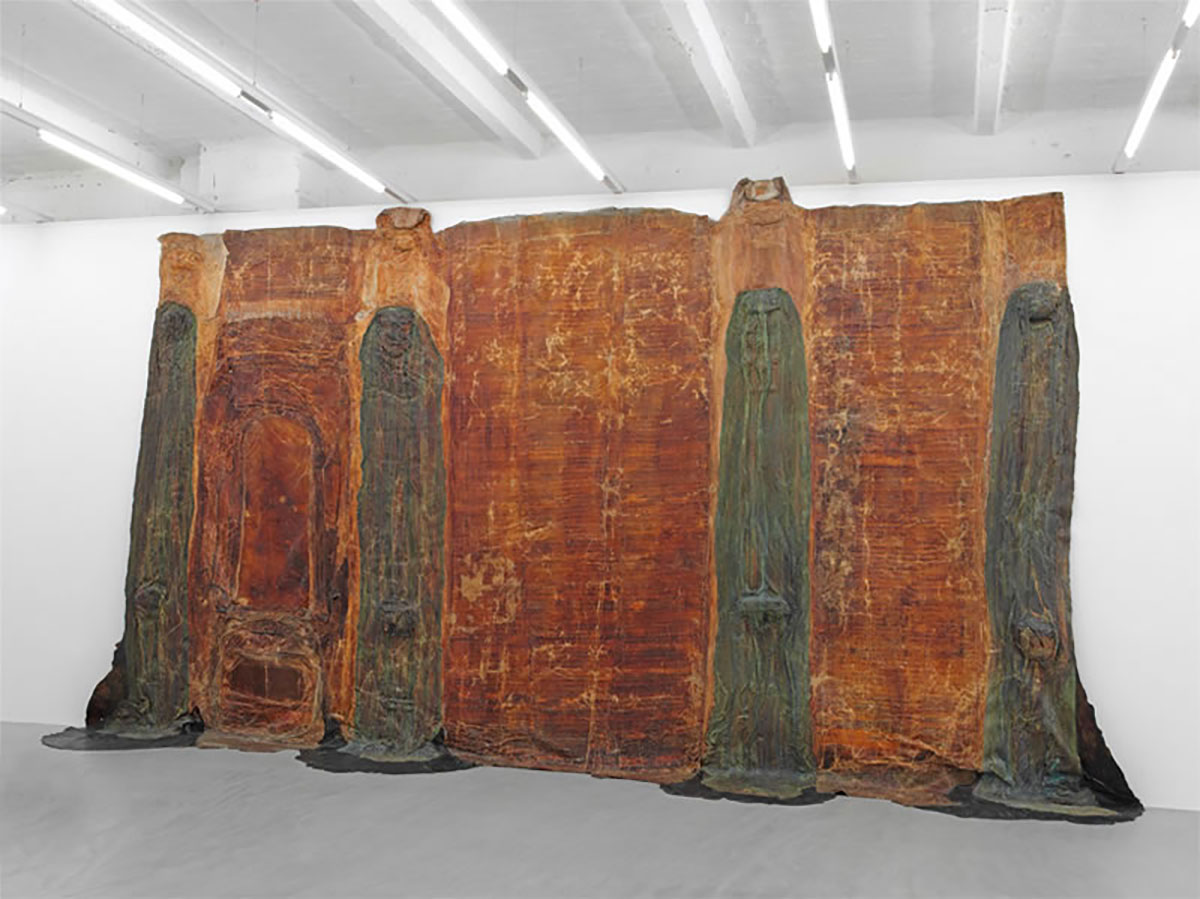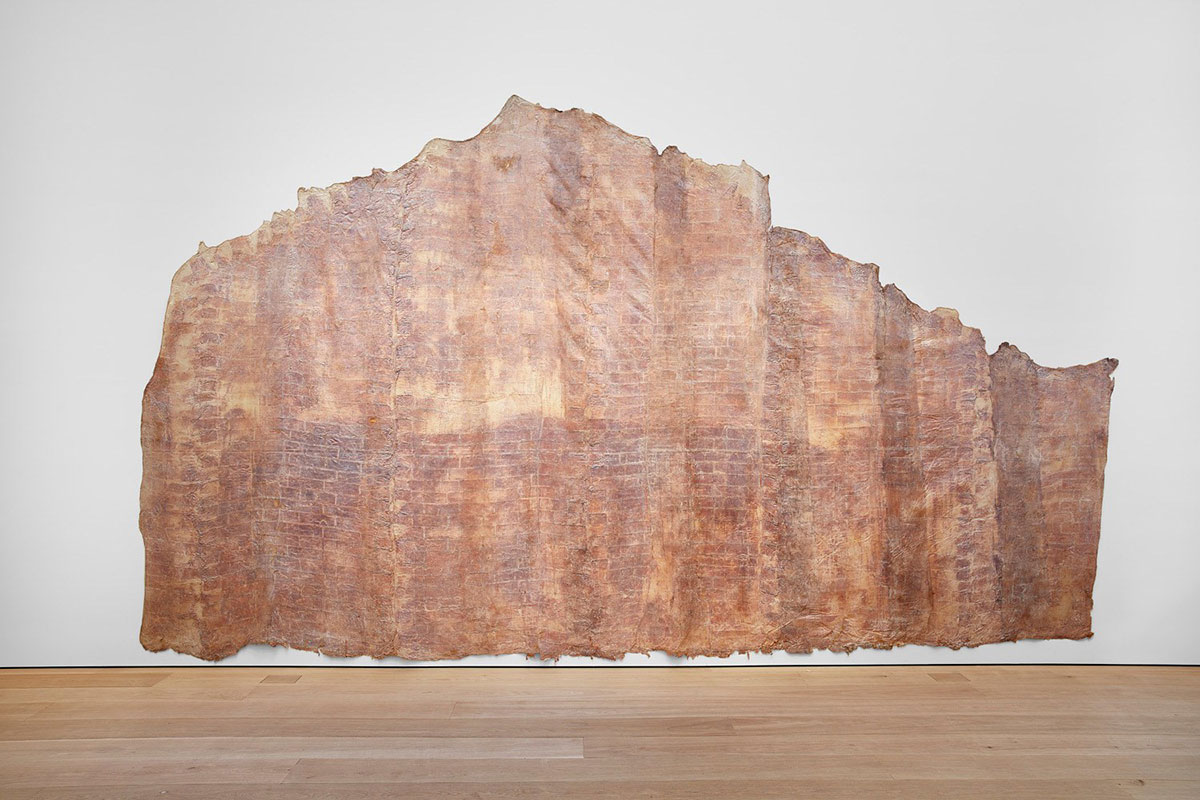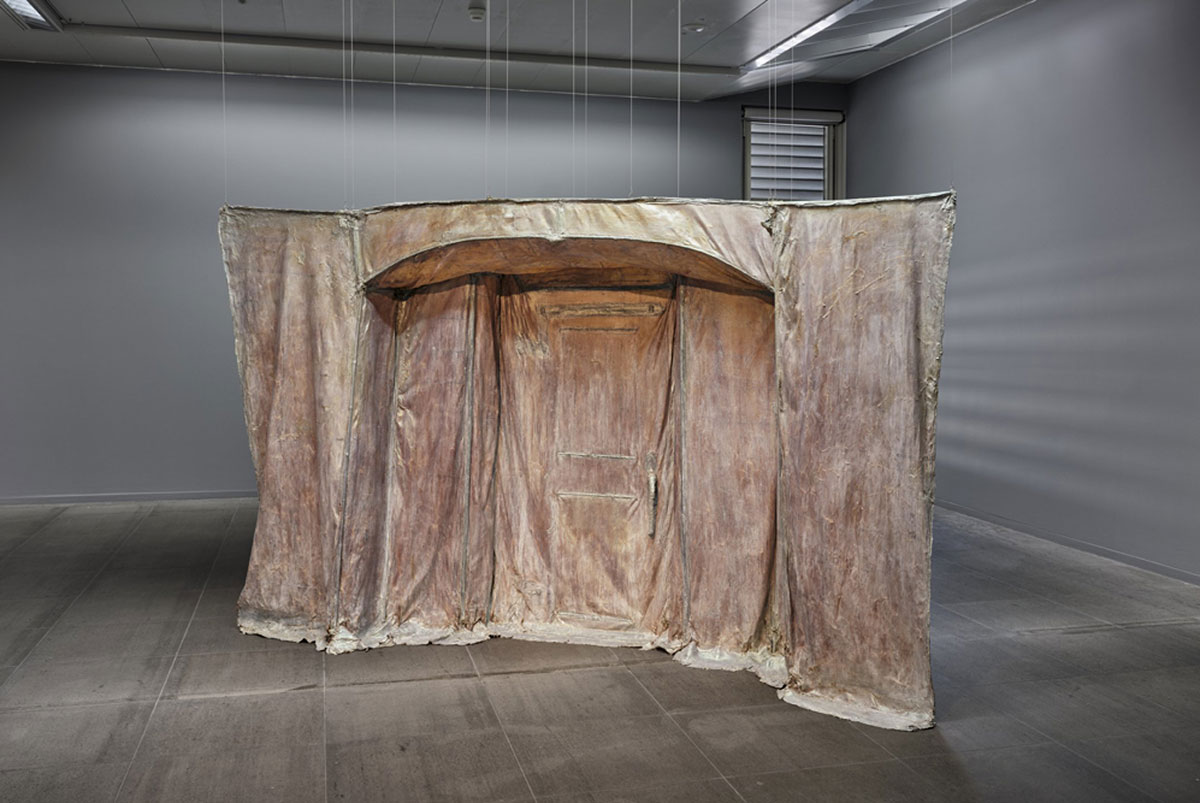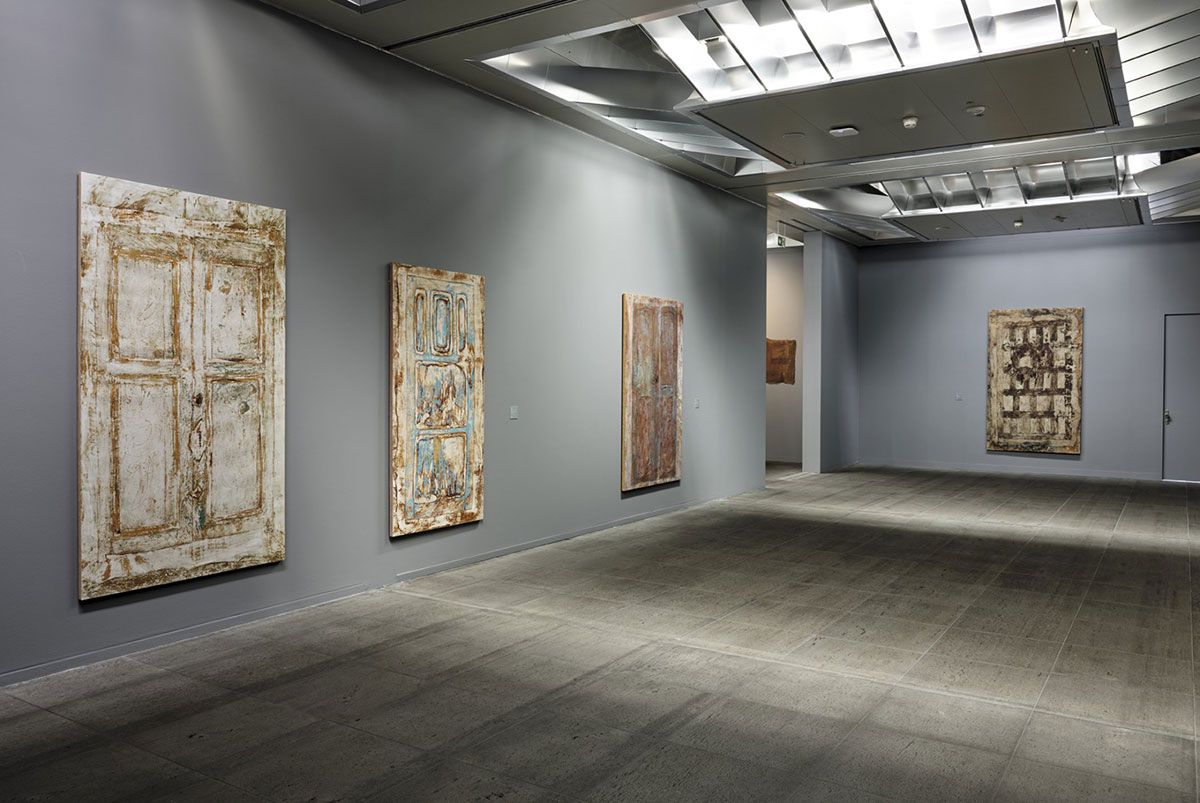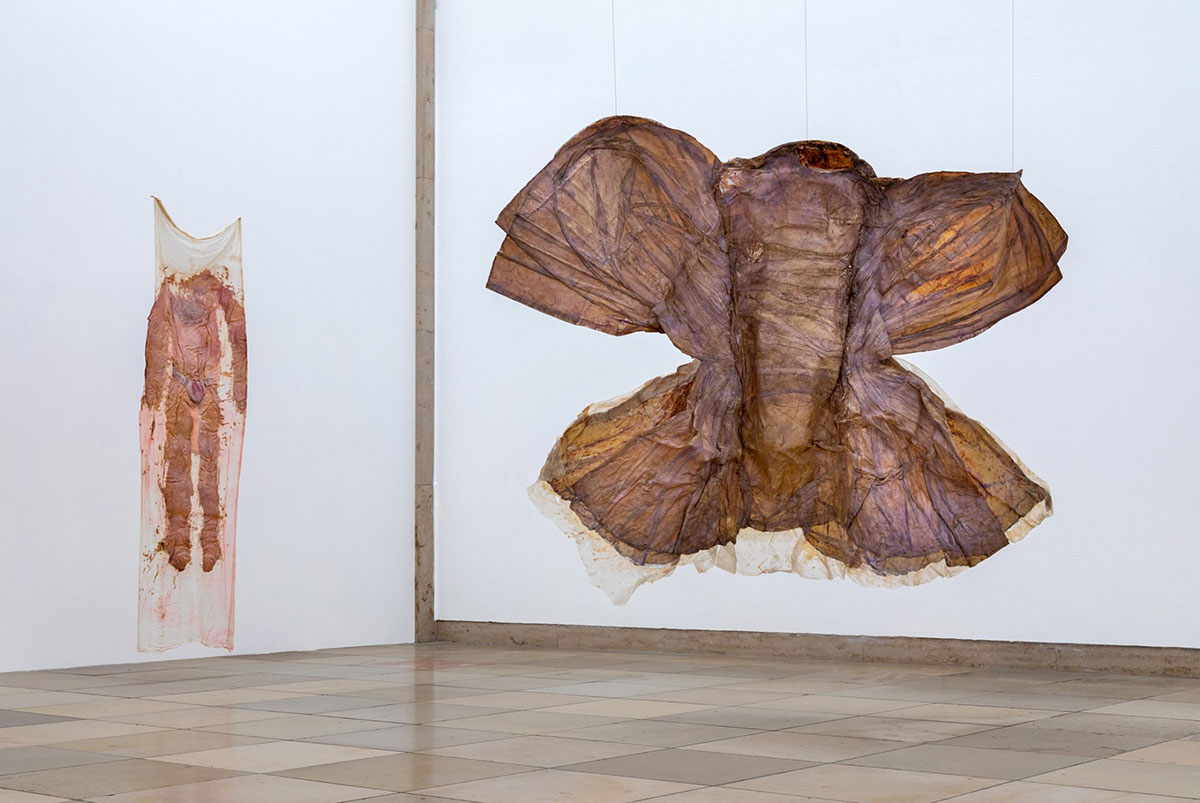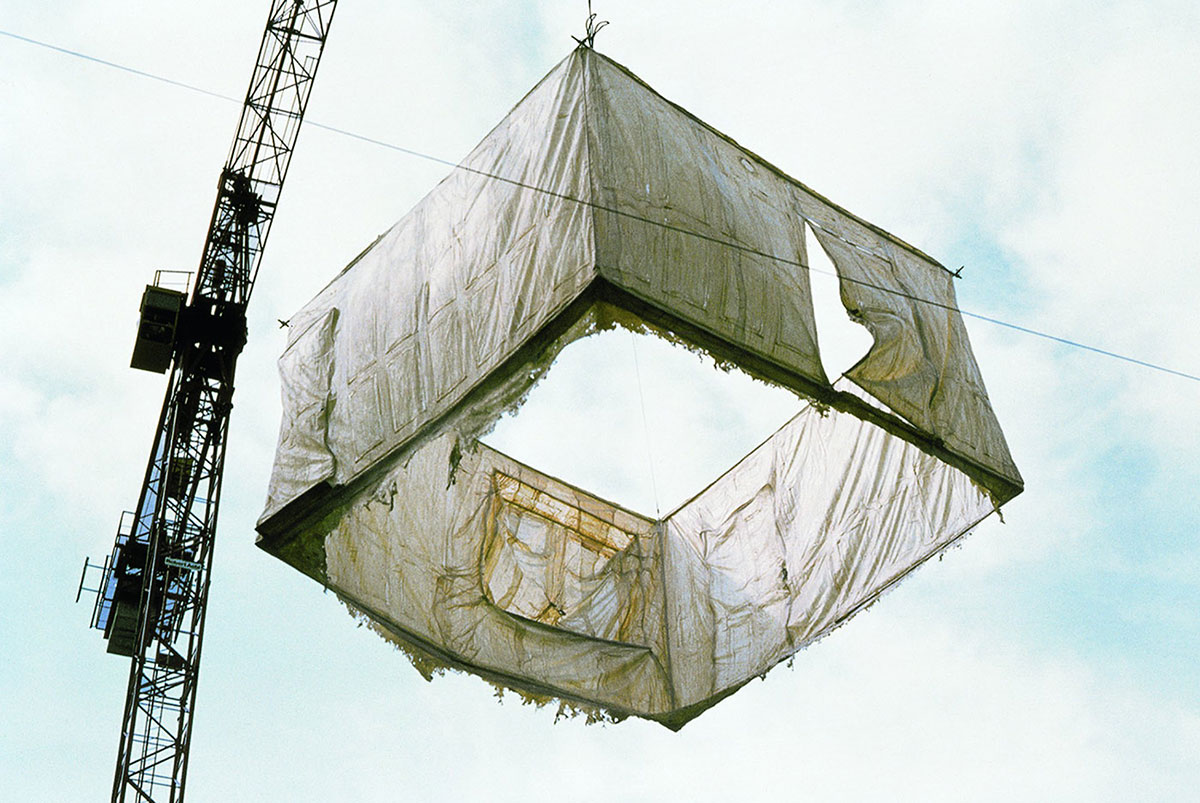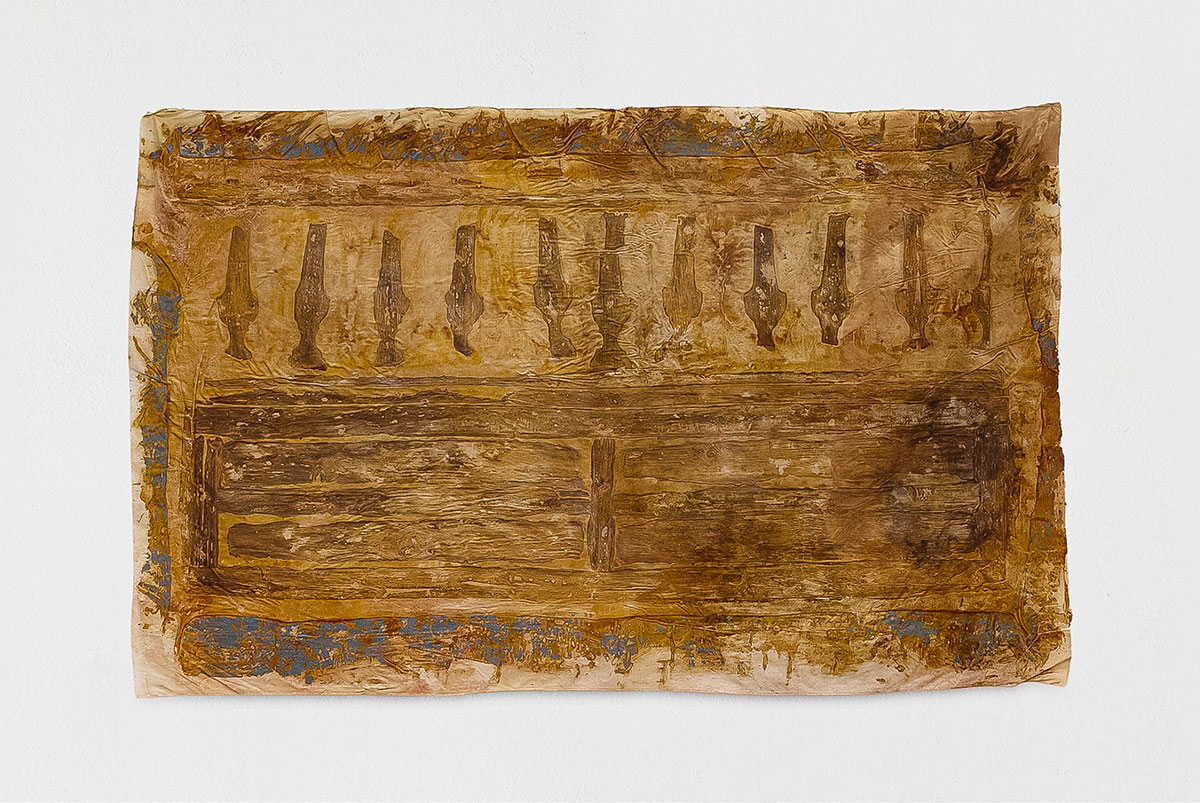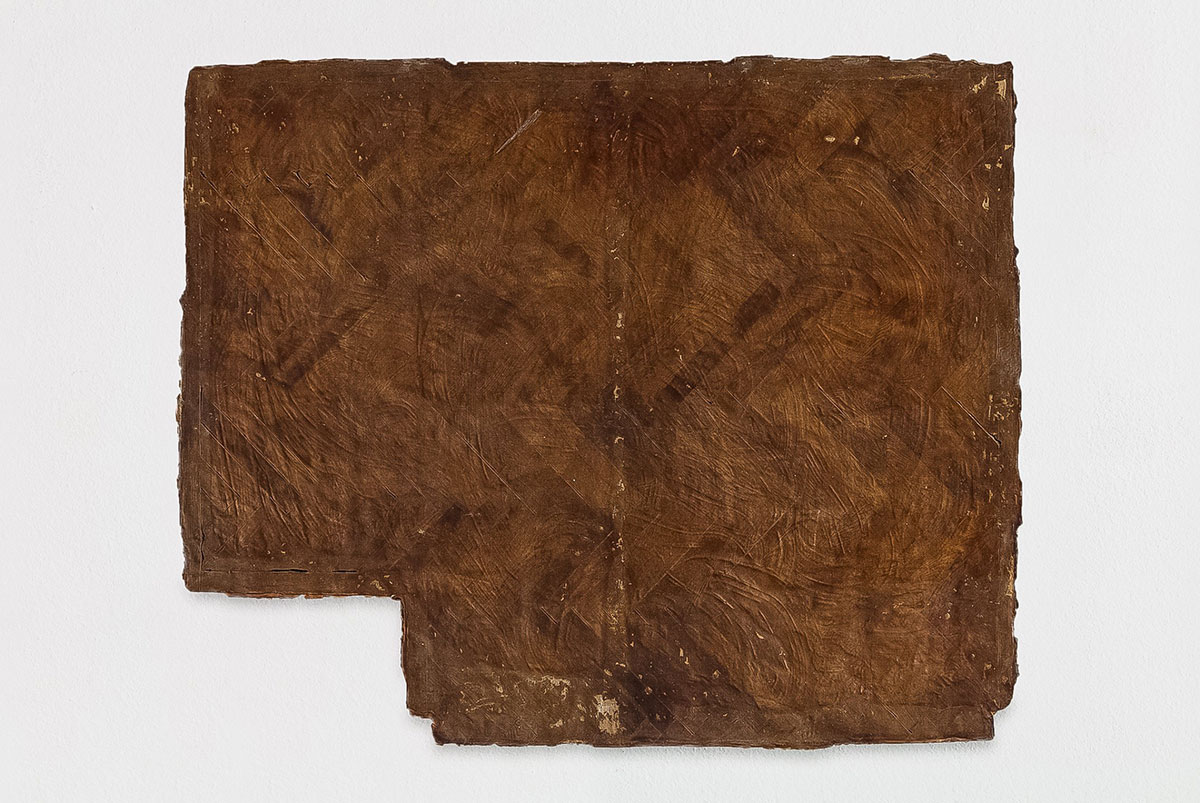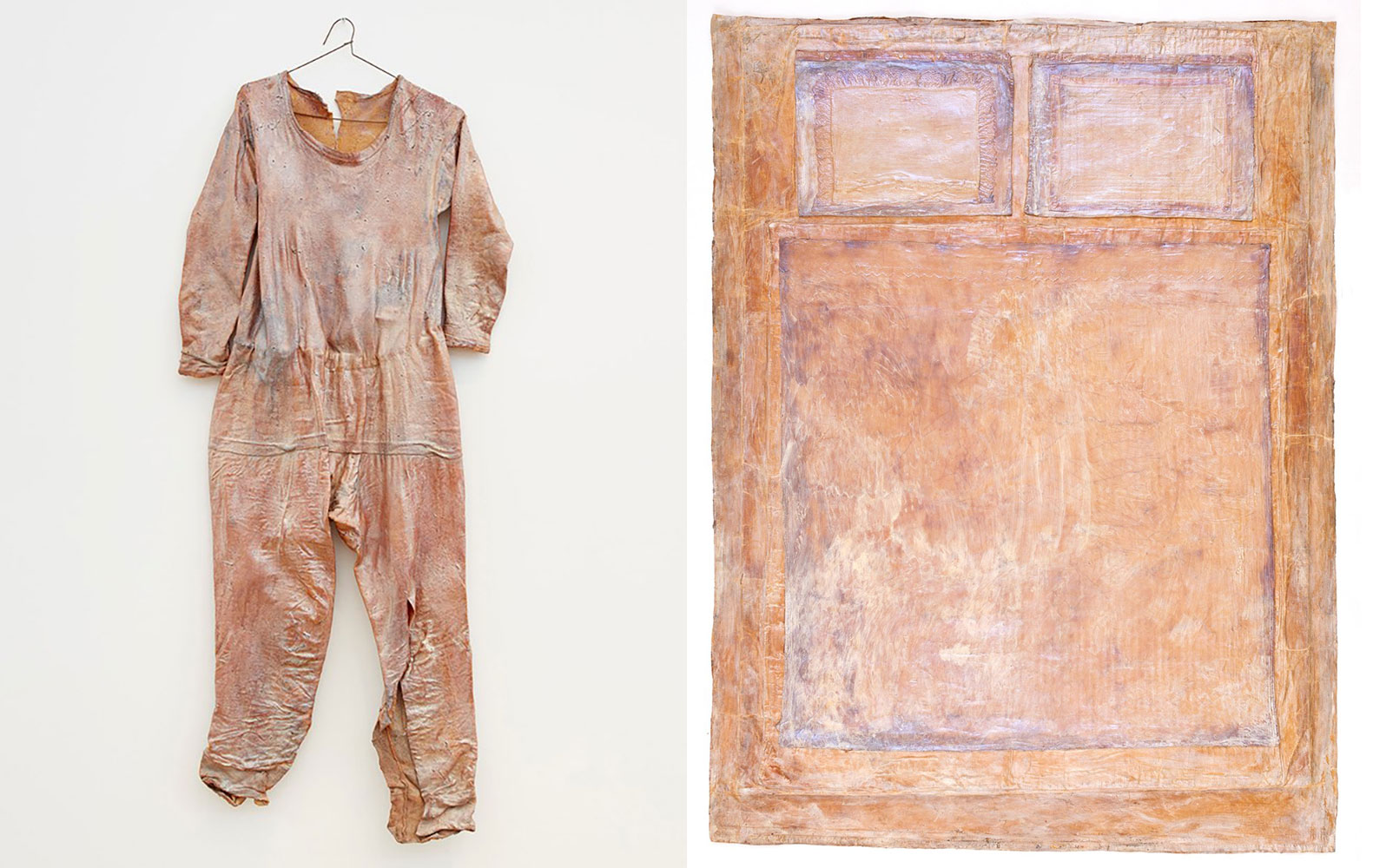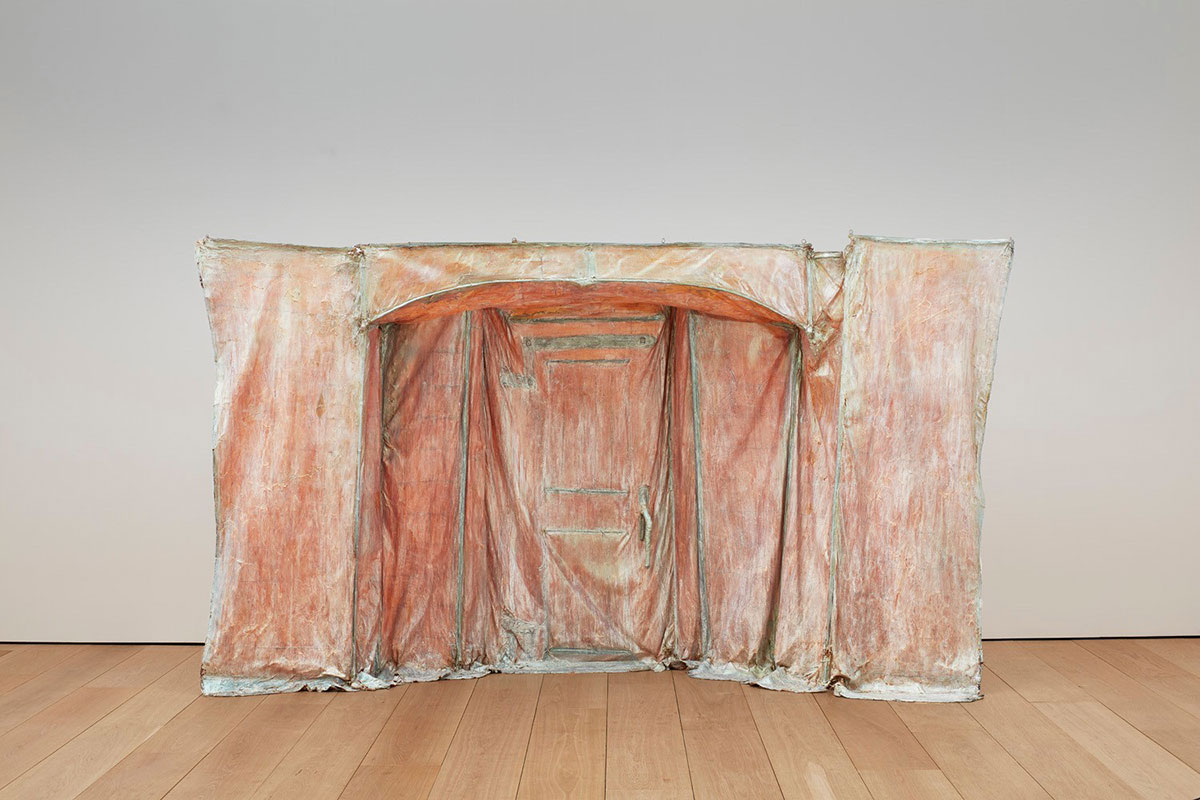TRACES:Heidi Bucher
![]() Today is the occasion to bear in mind Heidi Bucher (23/2/1926-11/12/1993), she distinguished herself particularly through her legendary “mouldings“, focusing and exploring the architectural space and the body through sculpture. It is a transformative and poetic work, that deals primarily with private spaces and belongings, architectural fragments from mostly the 19th century, feminism, domestication and the individual or collective experiences and memory. Through documents or interviews, starting with: moments and memories, we reveal out from the past-unknown sides of big personalities, who left their indelible traces in time and history…
Today is the occasion to bear in mind Heidi Bucher (23/2/1926-11/12/1993), she distinguished herself particularly through her legendary “mouldings“, focusing and exploring the architectural space and the body through sculpture. It is a transformative and poetic work, that deals primarily with private spaces and belongings, architectural fragments from mostly the 19th century, feminism, domestication and the individual or collective experiences and memory. Through documents or interviews, starting with: moments and memories, we reveal out from the past-unknown sides of big personalities, who left their indelible traces in time and history…
By Efi Michalarou
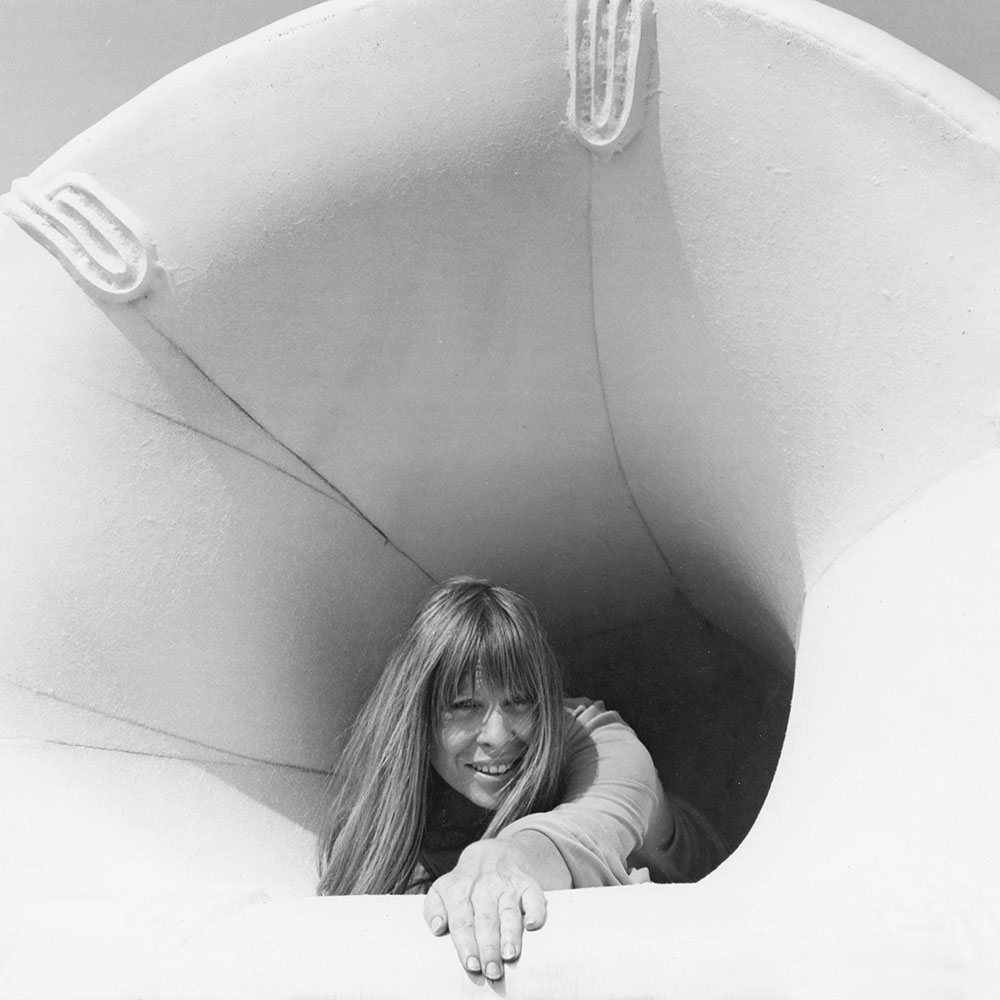 Heidi Bucher was born in Winterthur, Switzerland. After training as a tailor, Bucher began studying at the Kunstgewerbeschule (School of Applied Arts) in Zürich, attending the fashion class. She took courses with textile designer Elsi Giauque and the former Bauhaus masters Johannes Itten and Max Bill. All three’s teaching had the objective of combining art, design, craft, and everyday life. The colorful clothing designs (1945) and silk collages (1954–1960) are testimony to the above, organically abstract forms that Bucher supplied with movement, they also provide a demonstration of her early interest in the spatial. In Bucher’s sketch and exercise books from the 1940s, fashion sketches, fabric samples, and color exercises executed in the style of Johannes Itten have survived. What remains striking in many examples is the meticulous treatment of folds, gathers, and pleats in the fabric. It would appear as if the seams, pressings, and ruffles of her clothing designs are already hinting at the artist’s later interest in such architectural details as parquet patterns, paneling, window sills, decorative friezes, mantelpieces, gables, decorative moldings, and portals. For a tailor and designer, a technical knowledge of folds and drapery is essential, involving an understanding of how fabrics flow around the body and how the two-dimensional qualities of a fabric can be transformed into something three-dimensional. In Heidi Bucher’s work, clothes are presented as aesthetic, anthropological, and psychological objects. She uses clothing as an individual’s means of presenting themself in society, as a conveyor of memories, as witnesses to a certain period of life, and as an extended second skin that can be shed and left behind. In the early 1970s, she moved to Los Angeles. While there, she collaborated with her then-husband Carl Bucher on Landings to Wear and Bodyshells. Heidi Bucher’s Bodyshells (1972/2021) are oversized wearable foam body sculptures with a shimmering, mother-of-pearl finish. In the video of the same name they dance, sway, and bend on Los Angeles’ Venice Beach, their slow movements evoking sea creatures. The artistic genesis of this group of works derives from the period when Bucher was studying under Johannes Itten in Zürich during the 1940s. The Bauhaus theories he fostered have been reanimated in the Bodyshells and their merging of architecture, dance, costume, and sculpture. It is striking that Bucher’s carapace-like costumes, in their genderless appearance, managed to elude the gender discourses of the time. During her two-year sojourn in California during the early 1970s, she came into contact with the feminist movement that had been initiated by Judy Chicago and Miriam Schapiro at the California Institute of Arts, acquainted herself with the work of Eva Hesse, and became friends with the artist couple Ed and Nancy Kienholz. These encounters paved the way to both emancipatory subject matter and such new materials as latex and mother-of-pearl, which became central to her major works. It was in the two Bodyshell Nacré (1975) works that Bucher employed liquid latex for the first time, applying it to fabrics using her fingers. Her experimentation between two and three dimensions, utilizing the materiality of latex and her own physical presence, heralds her future interdisciplinary practice. After returning from California in 1973, Heidi Bucher established a studio in the premises of a former butcher’s shop in Zürich. She transformed its cold-storage facility into the so-called Borg, a place of “Ge-borg-enheit” (literally safety or security). Beginning with the casting of the space, the appropriation and transformation of interior spaces became her leitmotif from the mid-1970s onwards. The latex skinning, involving enormous physical exertion, facilitated Bucher’s transposition of psychological processes to materials. The work Borg (1978) embodies both a personal refuge and studio in which a new artistic world was developing, while also representing a portal to radical transformation. As with the sloughed skins, a threshold moment is alluded to, a moment of development in which the individual metamorphosizes from one state to the next. It is, at the same time, possible to discern Heidi Bucher’s love of architectural details in this early, partial skinning of a room. The keyhole, the door latch, and doorframe are discernable, as is the beautifully curved arch, now held in shape by cords attached to the ceiling. The rubbing in of mother-of-pearl, only hints of which remain perceptible today due to the aging of the material, infused Borg with an iridescent pink and elegant ethereality. In 1983 Bucher participated in the first and only Triennale in Le Landeron with a major action involving the skinning of both architecture and the body. Artists from the fields of dance, film, video, photography, performance, and painting such as Trisha Brown, Maria Lassnig, Ulrike Rosenbach, and Ulrike Ottinger were likewise participating in the triennial entitled La femme et l’art (Woman and Art). Five female performers, wearing male underwear, took part in a skinning over several days in the former castle prison in Le Landeron. The action culminated with the women rubbing each other with liquid latex, stripping off the resulting castings of the body after the initial drying and applying mother-of-pearl pigment. The result became Der Schlüpfakt der Parkettlibelle (The Hatching of the Parquet Dragonfly, 1983). The women’s skinnings of rooms in the castle prison were displayed in a procession leading through the town to the town hall. On arriving, they once again symbolically performed the act of hatching by taking off their body suits and leaving the space naked – Heidi Bucher described this as “de–larva–ing.” In contrast, Menhaut (Men Skin,1986) is the only extant work by Bucher in which latex was applied directly to the human body during a ritual performance. The resulting cast boasts male body hair still clinging to the fabric. Bucher focuses on the human psyche, attending to existential questions regarding nature, religion and, politics. Water as a subject can be repeatedly found in Heidi Bucher’s watercolors, sculptures, and skinnings from the 1980s. The watercolors’ broad, sweeping, but also precise brushstrokes evoke associations with wellsprings. A luminous blue is set in motion, imparting a direction of flow in the image. Curved lines or ones from the top downwards traverse the paper like rivers. The shapelessness of water achieves form in the works on paper, creating apparent analogies to latex’s liquid qualities. Other watercolors capture coagulation, whereby the kinetic nature of water attains clearly definable forms. Capturing the fleeting quality of water – which may be a contradiction in itself – becomes most impressively evident in Bucher’s sculptural works, such as Eiswassertasche (Ice Waterbag,1986). As in the skinnings, Heidi Bucher employs latex and gauze to capture the physically solid or liquid state of water, the hardened latex closely approximating the materiality of ice. In Die Wässer (The Waters, 1986), the constantly changing and transitory qualities of water also find their way into her skinning works. Floor skins, to which blue pigments were applied, cast in the former worsted yarn factory in Schaffhausen, illustrate the alienation of the building from its original function. Bucher merged disparities between hydroelectric powered industry and nature, while simultaneously questioning the construction of concepts of the latter. For Bucher, water is not only an end, but also a beginning. It symbolizes the cycle of life, becoming a palpable element fundamental to our own survival. Related political discussions around ecology, which began in the 1980s and could hardly be more urgent today, can be read as being central to these works. From the early 1980s, Heidi Bucher spent increasingly more time on the volcanic Canary Island of Lanzarote. It became an inspiring retreat, where she stayed and worked for longer periods of time until shortly before her death in 1993. Bucher acquired several properties in Teguise, including the Palacio Ico townhouse. During the time Bucher was living there, the building had not yet been renovated. The artist also used the house, which had neither running water nor electricity, for skinning actions. The works from her final creative period, spanning 1983 to 1993, once again document her lifelong and intense exploration of architectural structures and the functioning of both interior and exterior spaces. Heidi Bucher thought of houses as being analogous to the human body, architecture being a shell enclosing and cocooning a body like skin. On Lanzarote, Bucher focused on the subject of doors (1986–1990). The latex fabric castings in Teguise, their surface texture incorporating splinters of wood and residues of paint that adhered to the latex, tell of a specific place that was very important for Heidi Bucher. Latex discolors and hardens over time, becoming brittle and, like human skin, displaying signs of the aging process, demonstrating that commemorative objects are not spared the passage of time either. The motif of the door likewise represents a transition through different periods of life. The transience that is evoked by the patina of the doors, enables Heidi Bucher’s pieces to be read as a metaphor for mortality. The intense involvement with the door is a harbinger of the final metamorphosis, the final transit from life to death.
Heidi Bucher was born in Winterthur, Switzerland. After training as a tailor, Bucher began studying at the Kunstgewerbeschule (School of Applied Arts) in Zürich, attending the fashion class. She took courses with textile designer Elsi Giauque and the former Bauhaus masters Johannes Itten and Max Bill. All three’s teaching had the objective of combining art, design, craft, and everyday life. The colorful clothing designs (1945) and silk collages (1954–1960) are testimony to the above, organically abstract forms that Bucher supplied with movement, they also provide a demonstration of her early interest in the spatial. In Bucher’s sketch and exercise books from the 1940s, fashion sketches, fabric samples, and color exercises executed in the style of Johannes Itten have survived. What remains striking in many examples is the meticulous treatment of folds, gathers, and pleats in the fabric. It would appear as if the seams, pressings, and ruffles of her clothing designs are already hinting at the artist’s later interest in such architectural details as parquet patterns, paneling, window sills, decorative friezes, mantelpieces, gables, decorative moldings, and portals. For a tailor and designer, a technical knowledge of folds and drapery is essential, involving an understanding of how fabrics flow around the body and how the two-dimensional qualities of a fabric can be transformed into something three-dimensional. In Heidi Bucher’s work, clothes are presented as aesthetic, anthropological, and psychological objects. She uses clothing as an individual’s means of presenting themself in society, as a conveyor of memories, as witnesses to a certain period of life, and as an extended second skin that can be shed and left behind. In the early 1970s, she moved to Los Angeles. While there, she collaborated with her then-husband Carl Bucher on Landings to Wear and Bodyshells. Heidi Bucher’s Bodyshells (1972/2021) are oversized wearable foam body sculptures with a shimmering, mother-of-pearl finish. In the video of the same name they dance, sway, and bend on Los Angeles’ Venice Beach, their slow movements evoking sea creatures. The artistic genesis of this group of works derives from the period when Bucher was studying under Johannes Itten in Zürich during the 1940s. The Bauhaus theories he fostered have been reanimated in the Bodyshells and their merging of architecture, dance, costume, and sculpture. It is striking that Bucher’s carapace-like costumes, in their genderless appearance, managed to elude the gender discourses of the time. During her two-year sojourn in California during the early 1970s, she came into contact with the feminist movement that had been initiated by Judy Chicago and Miriam Schapiro at the California Institute of Arts, acquainted herself with the work of Eva Hesse, and became friends with the artist couple Ed and Nancy Kienholz. These encounters paved the way to both emancipatory subject matter and such new materials as latex and mother-of-pearl, which became central to her major works. It was in the two Bodyshell Nacré (1975) works that Bucher employed liquid latex for the first time, applying it to fabrics using her fingers. Her experimentation between two and three dimensions, utilizing the materiality of latex and her own physical presence, heralds her future interdisciplinary practice. After returning from California in 1973, Heidi Bucher established a studio in the premises of a former butcher’s shop in Zürich. She transformed its cold-storage facility into the so-called Borg, a place of “Ge-borg-enheit” (literally safety or security). Beginning with the casting of the space, the appropriation and transformation of interior spaces became her leitmotif from the mid-1970s onwards. The latex skinning, involving enormous physical exertion, facilitated Bucher’s transposition of psychological processes to materials. The work Borg (1978) embodies both a personal refuge and studio in which a new artistic world was developing, while also representing a portal to radical transformation. As with the sloughed skins, a threshold moment is alluded to, a moment of development in which the individual metamorphosizes from one state to the next. It is, at the same time, possible to discern Heidi Bucher’s love of architectural details in this early, partial skinning of a room. The keyhole, the door latch, and doorframe are discernable, as is the beautifully curved arch, now held in shape by cords attached to the ceiling. The rubbing in of mother-of-pearl, only hints of which remain perceptible today due to the aging of the material, infused Borg with an iridescent pink and elegant ethereality. In 1983 Bucher participated in the first and only Triennale in Le Landeron with a major action involving the skinning of both architecture and the body. Artists from the fields of dance, film, video, photography, performance, and painting such as Trisha Brown, Maria Lassnig, Ulrike Rosenbach, and Ulrike Ottinger were likewise participating in the triennial entitled La femme et l’art (Woman and Art). Five female performers, wearing male underwear, took part in a skinning over several days in the former castle prison in Le Landeron. The action culminated with the women rubbing each other with liquid latex, stripping off the resulting castings of the body after the initial drying and applying mother-of-pearl pigment. The result became Der Schlüpfakt der Parkettlibelle (The Hatching of the Parquet Dragonfly, 1983). The women’s skinnings of rooms in the castle prison were displayed in a procession leading through the town to the town hall. On arriving, they once again symbolically performed the act of hatching by taking off their body suits and leaving the space naked – Heidi Bucher described this as “de–larva–ing.” In contrast, Menhaut (Men Skin,1986) is the only extant work by Bucher in which latex was applied directly to the human body during a ritual performance. The resulting cast boasts male body hair still clinging to the fabric. Bucher focuses on the human psyche, attending to existential questions regarding nature, religion and, politics. Water as a subject can be repeatedly found in Heidi Bucher’s watercolors, sculptures, and skinnings from the 1980s. The watercolors’ broad, sweeping, but also precise brushstrokes evoke associations with wellsprings. A luminous blue is set in motion, imparting a direction of flow in the image. Curved lines or ones from the top downwards traverse the paper like rivers. The shapelessness of water achieves form in the works on paper, creating apparent analogies to latex’s liquid qualities. Other watercolors capture coagulation, whereby the kinetic nature of water attains clearly definable forms. Capturing the fleeting quality of water – which may be a contradiction in itself – becomes most impressively evident in Bucher’s sculptural works, such as Eiswassertasche (Ice Waterbag,1986). As in the skinnings, Heidi Bucher employs latex and gauze to capture the physically solid or liquid state of water, the hardened latex closely approximating the materiality of ice. In Die Wässer (The Waters, 1986), the constantly changing and transitory qualities of water also find their way into her skinning works. Floor skins, to which blue pigments were applied, cast in the former worsted yarn factory in Schaffhausen, illustrate the alienation of the building from its original function. Bucher merged disparities between hydroelectric powered industry and nature, while simultaneously questioning the construction of concepts of the latter. For Bucher, water is not only an end, but also a beginning. It symbolizes the cycle of life, becoming a palpable element fundamental to our own survival. Related political discussions around ecology, which began in the 1980s and could hardly be more urgent today, can be read as being central to these works. From the early 1980s, Heidi Bucher spent increasingly more time on the volcanic Canary Island of Lanzarote. It became an inspiring retreat, where she stayed and worked for longer periods of time until shortly before her death in 1993. Bucher acquired several properties in Teguise, including the Palacio Ico townhouse. During the time Bucher was living there, the building had not yet been renovated. The artist also used the house, which had neither running water nor electricity, for skinning actions. The works from her final creative period, spanning 1983 to 1993, once again document her lifelong and intense exploration of architectural structures and the functioning of both interior and exterior spaces. Heidi Bucher thought of houses as being analogous to the human body, architecture being a shell enclosing and cocooning a body like skin. On Lanzarote, Bucher focused on the subject of doors (1986–1990). The latex fabric castings in Teguise, their surface texture incorporating splinters of wood and residues of paint that adhered to the latex, tell of a specific place that was very important for Heidi Bucher. Latex discolors and hardens over time, becoming brittle and, like human skin, displaying signs of the aging process, demonstrating that commemorative objects are not spared the passage of time either. The motif of the door likewise represents a transition through different periods of life. The transience that is evoked by the patina of the doors, enables Heidi Bucher’s pieces to be read as a metaphor for mortality. The intense involvement with the door is a harbinger of the final metamorphosis, the final transit from life to death.

